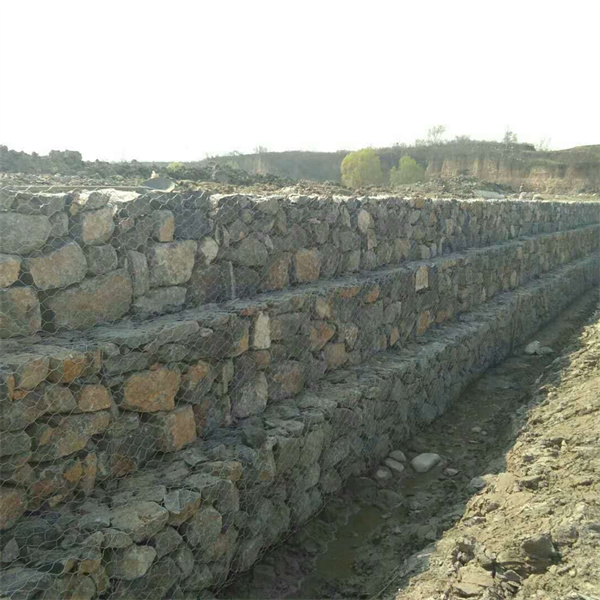ਅਕਤੂਃ . 21, 2024 10:55 Back to list
Affordable Gabion Foundation Solutions for Durable and Sustainable Construction Projects
The Relevance of Wholesale Gabion Foundations in Modern Construction
In the realm of modern construction, versatility and sustainability play significant roles in selecting materials. One innovative solution that has gained traction is gabion foundations. These structures, made up of wire mesh containers filled with stones or other materials, offer a range of benefits that align perfectly with contemporary engineering needs. In this article, we will explore the significance of wholesale gabion foundations and their application in various construction projects.
Understanding Gabion Foundations
Gabion foundations are essentially large cages or baskets made from steel wire mesh, filled with stones or aggregates. Traditionally used for retaining walls and erosion control, their application has expanded to include foundational support for various types of structures. The method of using gabions provides a flexible and adaptive approach to foundation design, particularly in areas where soil conditions may be challenging.
Advantages of Wholesale Gabion Foundations
1. Cost-Effectiveness Purchasing gabion materials in wholesale quantities can lead to significant cost savings. This is particularly beneficial for contractors and project managers who require large-scale quantities for extensive projects. The low material costs, combined with reduced labor expenses due to ease of installation, make gabion foundations an attractive choice.
2. Sustainability In an age where sustainability is paramount, gabion foundations shine as an eco-friendly option. They can utilize locally sourced materials for filling, such as stones from the construction site. This not only reduces transportation costs but also minimizes the carbon footprint associated with building materials.
3. Versatility Gabion foundations can be adapted to fit various construction needs. Whether for residential buildings, commercial properties, or landscaping projects, their design allows for customization in size and shape. This flexibility makes them an ideal choice for both temporary and permanent structures.
4. Erosion Control One of the primary purposes of gabions is to manage erosion effectively. When used as a foundation, they can help stabilize the soil and prevent erosion around a structure, ensuring longevity and durability. This is especially crucial in areas prone to heavy rainfall or flooding.
wholesale gabion foundation

5. Aesthetic Appeal Gabions can be designed to blend seamlessly into the surrounding environment. By choosing aesthetically pleasing stones for filling and strategically placing them, constructors can create visually appealing structures that complement the landscape, avoiding the stark industrial look of traditional foundations.
Applications in Construction
Gabion foundations have been successfully used in various applications
- Residential Construction Many homeowners are turning to gabion foundations for their unique look and effective performance, especially in hillside areas where soil stability is a concern.
- Commercial Projects Large-scale developments, such as shopping centers and office buildings, benefit from the structural integrity and affordability of gabion foundations, providing a sturdy base for heavy structures.
- Infrastructure Development Gabions are frequently used in road construction, bridges, and other infrastructural applications where soil support is critical. Their ability to adapt to environmental changes makes them a reliable choice.
- Landscaping and Retaining Structures Beyond mere foundations, gabions are widely used in landscaping as retaining walls, garden beds, and decorative elements. Their adaptability can redefine the aesthetics and functionality of outdoor spaces.
Conclusion
Wholesale gabion foundations represent a significant advancement in construction materials, combining practicality and sustainability. Their cost-effectiveness, versatility, and environmental benefits make them an attractive choice for a wide variety of construction projects. As the industry continues to seek innovative solutions to complex challenges, gabion foundations will undoubtedly play a critical role in shaping the future of building practices. Embracing this technology not only enhances structural integrity but also fosters a sustainable approach to construction, aligning with the growing demand for environmentally responsible practices in the industry.
-
HESCO Gabion Baskets for Coastal Erosion Prevention
NewsAug.22,2025
-
Longevity and Durability of River Rock Gabion Walls
NewsAug.22,2025
-
How to Integrate Gabion 3D Walls in Urban Planning
NewsAug.22,2025
-
Reno Mattress Gabion Applications in Civil Engineering
NewsAug.22,2025
-
How to Install Wire Mesh for Gabion Baskets Properly
NewsAug.22,2025
-
Best Materials for Filling a Chain Link Gabion
NewsAug.22,2025
-
Wire Mesh Thickness Impact on Gabion Wall Load Bearing
NewsAug.12,2025






